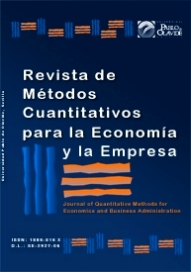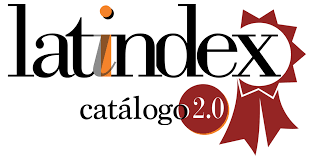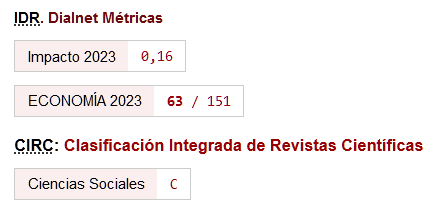Informalidad laboral y brecha salarial entre trabajadores formales e informales en la Zona Central del Perú
DOI:
https://doi.org/10.46661/rev.metodoscuant.econ.empresa.8864Palabras clave:
Informalidad, salario, brecha laboralResumen
El objetivo de estudio es analizar las brechas salariales entre los trabajadores formales e informales en la Zona Central del Perú, ya que existe una alta presencia de la informalidad en aproximadamente más de 75.0 % de la población económicamente activa, esto es; tres de cada cuatro personas son informales en el Perú a pesar de las facilidades otorgadas por el estado para las formalizaciones. En relación a lo planteado el objetivo fue Analizar las divergencias de las brechas salariales entre los trabajadores formales e informales en la zona central del Perú para lo cual se empleó los datos de las Encuesta Nacional de Hogares (ENAHO) y una metodología establecida por Heckman, Mincer y Oaxaca. Los resultados permiten describir, la falta de instrucción representa aproximadamente el 30.9% de las diferencias salariales entre asalariados formales e informales. Tener primaria incompleta aumenta los ingresos en alrededor del 42.0% para los formales y 52.9% para los informales en comparación con aquellos con instrucción completa, dado la mayoría de los trabajados tienes niveles de educación primaria y secundaria en los datos obtenidos. En el modelo Oaxaca, la falta de instrucción contribuye aproximadamente al 23.3% de las diferencias salariales entre formales e informales.
Descargas
Citas
Aldama Chávez, G. W., Huillcahuari Huamani, S. V., Larico Flores, J. A., y Vargas Salazar, I. Y. (2022). Variación de los Determinantes del Ingreso por Actividad Principal en el Perú, 2019-2020. Transdisciplinary Human Education, 6(10), 1-12.https://doi.org/10.55364/the.Vol6.Iss10.114
Arroyo Yupanqui, M. A., Ccencho Pari, G., Morales Paredes, W., Balvin De La Cruz, C. F., yPérez Ticse, J. C. (2022). Disparidad salarial y género en la zona central del Perú. Llamkasun, 3(2), 02-14. https://doi.org/10.47797/llamkasun.v3i2.102
Blinder, A. S. (1973). Wage Discrimination: Reduced Form and Structural Estimates. The Journal of Human Resources, 8(4), 436-455. https://doi.org/10.2307/144855
Bustamante, A., Cabezas, M., Gutiérrez, A., Niculcar, D., y Nilo, J. (2022). Informalidad laboral en tiempos de la COVID-19: análisis del mercado laboral chileno. Informes Técnicos OIT Cono Sur (27)
Cepal, O. I. T. (2020). La dinámica laboral en una crisis de características inéditas: desafíos de política. Coyuntura laboral en América Latina y el Caribe. OIT, 23.
Cerquera Losada, O. H., Arias Barrera, C. J., & Juan Felipe Prada-Hernández, J. F. P.-H. (2020). La Brecha Salarial por género en Colombia y en el Departamento de Caldas. Ánfora, 113-136. https://doi.org/10.30854/anf.v27.n48.2020.671
Daymont, T. N., y Andrisani, P. J. (1984). Job Preferences, College Major, and the Gender Gap in Earnings. The Journal of Human Resources, 19(3), 408-428. https://doi.org/10.2307/145880.
De Soto, H. (2019). El Misterio del Capital. In News.Ge.f. Editorial Planeta.
Díaz, M. (2014). Brecha salarial por género en Colombia [Tesis de pregrado, Universidad de la Sabana]. Intellectum Repositorio Universidad de la Sabana. http://hdl.handle.net/10818/11203
Díaz-Bautista, A., y Díaz Domínguez, M. (2004). " Capital Humano y Crecimiento Económico en México (1970-2000). Human Capital and Economic Growth in Mexico" , Urban/regional 0405008, Biblioteca de la Universidad de Munich, Alemania. http://www.geocities.com/adiazbau/
Espejo, A. (2022). Informalidad laboral en América Latina Propuesta metodológica para su identificación a nivel subnacional. Naciones Unidas.
Fuentes Campos, V. (2023). ¿En cuánto se ha reducido el poder adquisitivo de los limeños al cierre del 2022? IPE-Instituto Peruano de Economia. https://www.ipe.org.pe/portal/en-cuanto-se-ha-reducido-el-poder-adquisitivo-de-los-limenos-al-cierre-del-2022/
Gutiérrez Huañec, N. (2023). Discriminación salarial por etnia: un análisis del mercado laboral peruano. Econociencia, 1(1), 37 - 53. Recuperado a partir de https://revistas.unsaac.edu.pe/index.php/Reveconociencia/article/view/1187
Kamichi Miyashiro, Manuel José. (2023). La realidad de la informalidad en el Perú previo a su bicentenario. Desde el Sur, 15(1), e0013. Epub 09 de enero de 2023.https://doi.org/10.21142/DES-1501-2023-0013
Martínez Jasso, I., & Acevedo Flores, G. J. (2004). La brecha salarial en México con enfoque de género: Capital humano, discriminación y selección muestral. CIENCIA UANL, 7(1). http://eprints.uanl.mx/1521/
Mincer, J. (1984). Wage structures and labor turnover in the United States and Japan. Journal of the Japanese and International Economies, 2(2), 97-133. https://doi.org/10.1016/0889-1583(88)90017-2
Oaxaca, R. (1973). Male-Female Wage Differentials in Urban Labor Markets. International Economic Review, 14(3), 693-709. https://doi.org/10.2307/2525981
Obregon, E., y Espiritu, J. (2022). Factores Socioeconómicos que Influyen en la Informalidad Laboral en el Departamento de Junín. Periodo 2015-2020 [Tesis para optar el título profesional de Economista, Universidad Nacional del Centro del Perú]. https://repositorio.uncp.edu.pe/bitstream/handle/20.500.12894/8966/T010_70759460_T%20ESPIRITU%20CASTILLO.pdf?sequence=1&isAllowed=y
OIT (2020). ¿Respuesta rápida a la covid-19 en un contexto de alta informalidad? El caso del Perú. Organización Internacional Del Trabajo.
Pariona, C. (2022). Analizar a Influencia de los Factores Socioeconómicos de la Brecha Salarial entre Formales e Informales: Región Huancavelica, 2015-2019 [para optar el grado académico de maestra en gestión pública, Universidad Nacional del Centro del Perú]. https://repositorio.uncp.edu.pe/bitstream/handle/20.500.12894/8583/Tesis%20final%20-%20Pariona%20Gutierrez%20Carmen%20Luz_removed.pdf?sequence=1&isAllowed=y
Ranis, G., y Stewart, F. (2002). Crecimiento económico y desarrollo humano en América Latina. Comisión Económica para América Latina y el Caribe (CEPAL). https://doi.org/10.18356/7d7df2e5-es
Solis, J. (2021). Factores que influyen en la informalidad laboral desde la perspectiva de la oferta laboral en la provincia de Lima, Perú, en el año 2018. [Tesis para optar por el título de Licenciado en Economía y Negocios Internacionales, UNIVERSIDAD ESAN ]. https://repositorio.esan.edu.pe/bitstream/handle/20.500.12640/2749/2021_ECYNI_21-2_01_T.pdf?sequence=1&isAllowed=y
Vásquez Núñez, Javiera. (2018). Crecimiento económico, estructura del mercado laboral, pobreza y desigualdad por ramas de actividad económica (994987693302676; ILO Working Papers).
Descargas
Publicado
Cómo citar
Número
Sección
Licencia
Derechos de autor 2024 Marco Antonio Arroyo-Yupanqui, Germán Ccencho-Pari, Juan Carlos Pérez-Ticse

Esta obra está bajo una licencia internacional Creative Commons Atribución-CompartirIgual 4.0.
El envío de un manuscrito a la Revista supone que el trabajo no ha sido publicado anteriormente (excepto en la forma de un abstract o como parte de una tesis), que no está bajo consideración para su publicación en ninguna otra revista o editorial y que, en caso de aceptación, los autores están conforme con la transferencia automática del copyright a la Revista para su publicación y difusión. Los autores retendrán los derechos de autor para usar y compartir su artículo con un uso personal, institucional o con fines docentes; igualmente retiene los derechos de patente, de marca registrada (en caso de que sean aplicables) o derechos morales de autor (incluyendo los datos de investigación).
Los artículos publicados en la Revista están sujetos a la licencia Creative Commons CC-BY-SA de tipo Reconocimiento-CompartirIgual. Se permite el uso comercial de la obra, reconociendo su autoría, y de las posibles obras derivadas, la distribución de las cuales se debe hacer con una licencia igual a la que regula la obra original.
Hasta el volumen 21 se ha estado empleando la versión de licencia CC-BY-SA 3.0 ES y se ha comenzado a usar la versión CC-BY-SA 4.0 desde el volumen 22.










